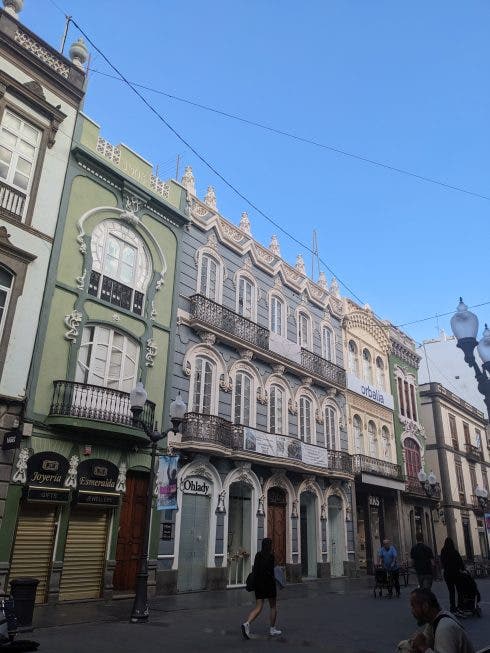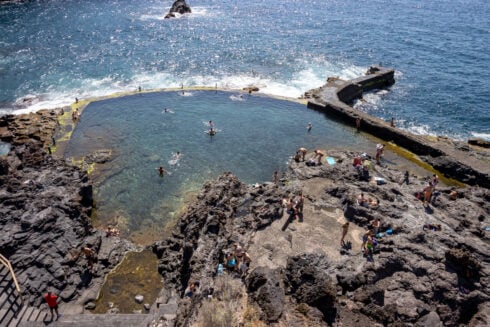THE Telegraph has named this city on Spain’s Canary Islands an ‘underrated’ must visit destination for 2024.
The Canary Islands are a popular holiday location for Brits looking for winter sun.
Many flock to the beaches of Tenerife or dunes of Gran Canaria to escape the January blues.
Not many people know that the islands also hold vibrant cities full of rich culture, gastronomy and architecture.
Now, British newspaper, The Telegraph has praised Gran Canaria’s little known capital city, Las Palmas.
Though locals might complain that the north of the island is ‘cold’ it is still blessed with the Canary Islands balmy microclimate, averaging around 20 degrees even in winter.
This microclimate, alongside the laidback, accepting culture offers the city a ‘sky-high quality of life’.
Las Palmas has two ‘urban beaches’ where you can enjoy a spot of sunbathing after soaking up the culture.
Despite great investment in tourism throughout the island, the ‘most complete and cosmopolitan city’ on the archipelago has ‘retained all the character and realness of a big Spanish town’, according to the newspaper.
As a relatively new travel destination, just a few boujee hotels have popped in the emblematic old town, known as Vegueta.

Famous for its ‘world class’ carnival, Las Palmas has ‘all the touchy-feely sensuousness of a Latin American city – and is less than half the flight time from the UK.’
Indeed, the colourful buildings with ancient wooden balconies are reminsicent of Colombia’s top destination, Cartagena.
It’s no wonder, since Christopher Columbus and his team of conquistadors famously stopped off in the Canary Islands on their way to colonise the Americas.
There’s even a beautiful house museum dedicated to Columbus where he stayed while in the city.
If you get lost, simply listen for a blood curdling cry from one of the parrots that also hangs out in the museum to remind visitors of the birds the famous conquistador brought back from his expeditions.

Established in the 16th century, the old town is perfect for admiring ‘palatial houses with grand façades, carved wooden balconies and ornamental doorways.’
Between restaurants, bars and souvenir shops, there’s also half-a-dozen museums in Vegueta including the Museo Canario, where you can learn the fascinating history of the island’s pre-hispanic people and the Modern Art Museum (Centro Atlantico de Arte Moderno).
One of the highlights of the neighbourhood is the Plaza de Santa Ana, with curious dog statues and a stunning view of the cathedral.

Inside, the domed roof is decorated with unique glass lamps which beautifully reflect the colorful stained glass windows.

Around the cathedral are stunning examples of religious art, but if that’s not your thing, it’s just two euros to hop in the lift to the roof.
There you will be greeted by panoramic views of the city, including the colourful barrios sprawling up the hill reminiscent of Rio de Janiero.

After you’ve exhausted the enchanting streets of the old town, the Triana neighbourhood is the modern city centre, complete with cute cafes, plenty of shops and fine dining.
Enjoy a coffee down one of the many cobbled streets, lined with pastel art nouveau buildings.

Canarian chefs are proud of their local cuisine, serving patatas arrugadas with mojo (potatoes with a spicy sauce), ropa vieja (a kind of stew) and of course, lots of seafood.
The Telegraph recommended Qué Leche (restaurantequeleche.es), Bevir (restaurantebevir.com), Triciclo (triciclobar.com), and El Canaia de Cano (el-canaia-de-cano.eatbu.com).
Further along the coast is the ‘contemporary’ heart of the city, Las Canteras.
The area is ‘buzzing’ on a Saturday night with plenty of digital nomads, young Canarians and tourists enjoying a drink.
Gran Canaria is just a short flight from most big Spanish cities, with airlines like Vueling offering cheap tickets.
Click here to read more News from The Olive Press.








